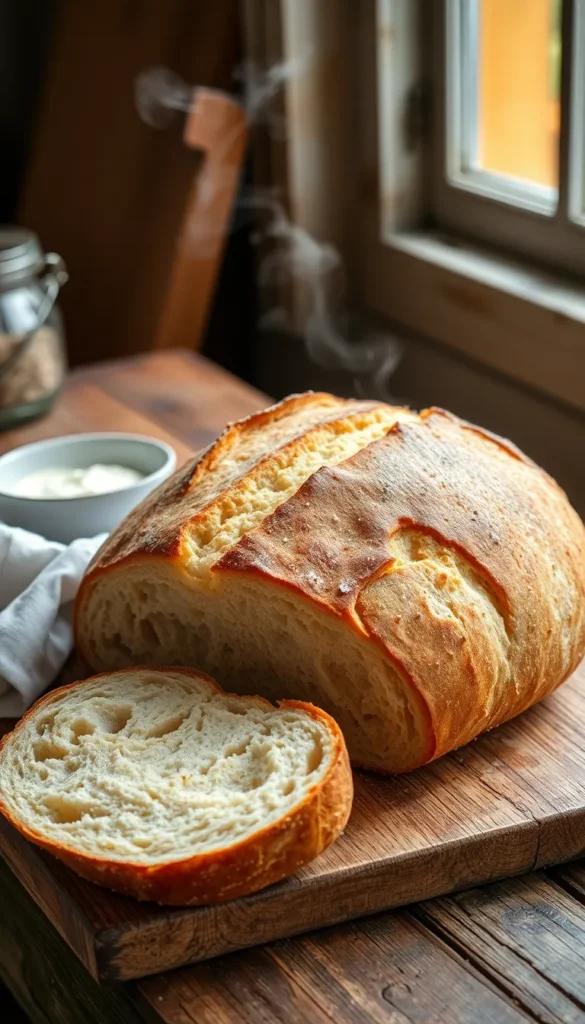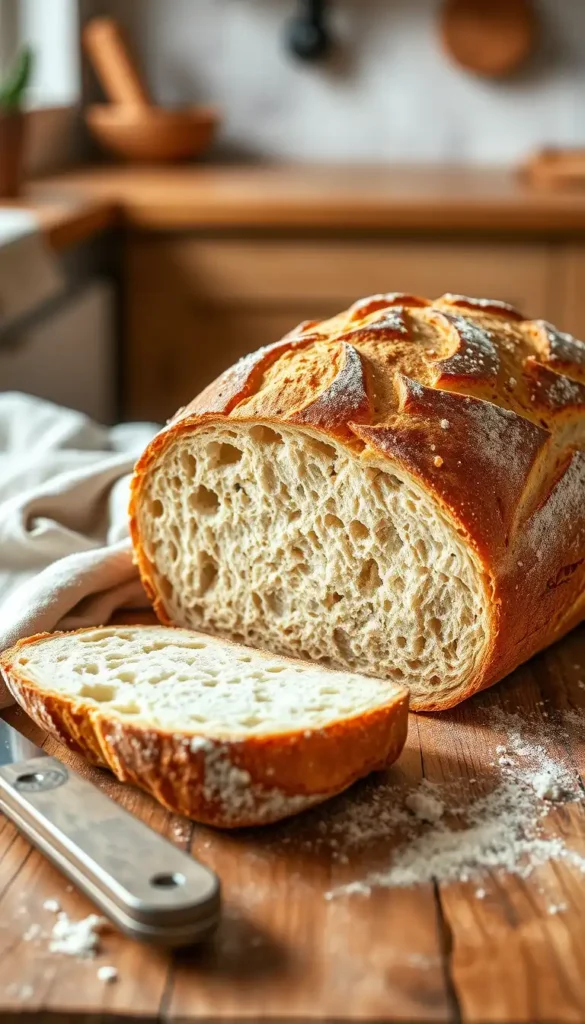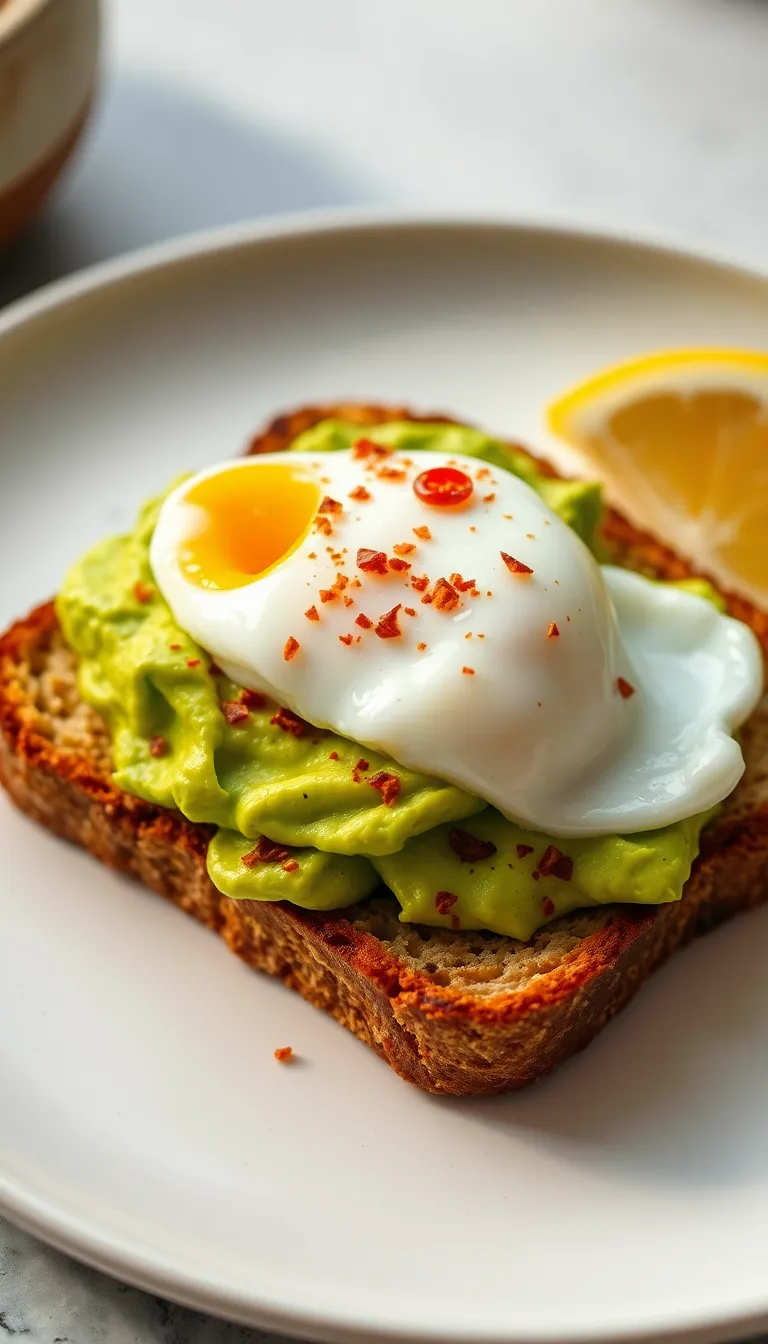Sourdough French Bread: Crispy, Chewy, and Perfectly Tangy
There’s nothing quite like the aroma of freshly baked bread filling your kitchen — especially when it’s sourdough French bread. With its crisp golden crust, soft chewy crumb, and signature tang, this bread perfectly combines the best of traditional French baking with the complex flavor of sourdough. Whether you’re new to baking or a seasoned bread lover, making sourdough French bread at home is incredibly rewarding — and easier than you might think.
In this guide, you’ll learn everything you need to know: from how to make your own sourdough French bread step-by-step, to tips for achieving that authentic bakery-style texture and flavor.

What Is Sourdough French Bread?
Sourdough French bread is a rustic loaf made by fermenting dough with a natural sourdough starter instead of commercial yeast. The result? A deep, slightly tangy flavor and a crusty exterior that’s perfect for sandwiches, toast, or serving with soups and stews.
Unlike typical sourdough boules, which are round and thick, French-style sourdough bread tends to be longer and thinner, similar to a baguette — but with that signature sourdough flavor.
Why You’ll Love This Sourdough French Bread Recipe

This recipe is a true crowd-pleaser. Here’s why you’ll fall in love with it:
- 🥖 Crispy crust with a golden brown shine
- 💛 Soft, airy crumb that’s perfect for slicing
- 🍋 Naturally tangy flavor without being too sour
- ⏰ Simple ingredients – just flour, water, salt, and sourdough starter
- 👩🍳 Beginner-friendly method with no fancy tools required
Whether you’re baking for breakfast, dinner, or your next family gathering, this sourdough French bread delivers bakery-quality results right from your kitchen.
Ingredients for Sourdough French Bread

You only need a handful of simple ingredients for this recipe — no commercial yeast, no additives, and no shortcuts. The magic lies in time and fermentation.
Ingredients:
- 1 cup (200g) active sourdough starter (fed and bubbly)
- 1 ½ cups (360ml) warm water (about 80°F / 27°C)
- 4 cups (480g) bread flour or all-purpose flour
- 2 teaspoons (10g) sea salt
That’s it! Just four ingredients come together to create a beautiful, tangy loaf of sourdough French bread.
Tools You’ll Need
You don’t need a professional bakery setup. Here’s what helps:
- Large mixing bowl
- Kitchen scale (optional but highly recommended)
- Dough scraper or bench knife
- Baking sheet or baguette pan
- Lame or sharp knife for scoring
- Oven with steam or a pan for adding water
How to Make Sourdough French Bread (Step-by-Step Guide)
This process takes a bit of patience, but the results are worth it. Plan for an overnight rise for the best flavor and texture.
Step 1: Activate Your Starter
Make sure your sourdough starter is active and bubbly before you begin. Feed it 6–8 hours before baking. If it doubles in size and passes the “float test” (a spoonful floats in water), it’s ready to use.
Step 2: Mix the Dough
In a large bowl, combine:
- 1 cup of active sourdough starter
- 1 ½ cups warm water
Stir until dissolved. Then add:
- 4 cups of flour
- 2 teaspoons salt
Mix with your hands or a dough hook until the dough comes together. It will be sticky at first — that’s okay.
Step 3: Autolyse (Optional but Recommended)
Let the dough rest for 30–45 minutes before kneading. This helps hydrate the flour and makes the dough easier to handle.
Step 4: Stretch and Fold
Instead of kneading traditionally, perform stretch and folds every 30 minutes for 2 hours:
- Grab one side of the dough and stretch it upward.
- Fold it over the center.
- Rotate the bowl 90°, and repeat four times.
This builds gluten strength and gives your sourdough French bread its chewy structure.
Step 5: Bulk Fermentation
Cover the bowl with plastic wrap or a damp towel and let it rise at room temperature (70–75°F) for 4–6 hours, or until doubled in size. You should see visible bubbles on the surface.
Step 6: Shape the Loaf
Once the dough has risen, gently turn it out onto a lightly floured surface. Shape it into a batard (oval) or a baguette shape:
- Flatten the dough slightly into a rectangle.
- Fold the top edge down and roll it tightly into a loaf.
- Pinch the seam to seal.
Place the shaped dough onto parchment paper or a baguette pan, seam-side down.
Step 7: Final Proof (Cold Fermentation)
For maximum flavor, cover the dough and refrigerate it overnight (8–12 hours).
Alternatively, let it rise at room temperature for 1–2 hours until slightly puffy.
Step 8: Preheat and Score
Preheat your oven to 475°F (245°C) with a baking stone or steel inside.
Right before baking, score the top of the loaf using a lame or sharp knife — 2–3 diagonal slashes will help control the rise and give your bread a professional look.
Step 9: Bake with Steam
For that perfect crispy crust, you need steam in the first few minutes of baking:
- Place a metal pan on the bottom rack and pour in 1 cup of hot water as you put the bread in.
- Bake for 20 minutes with steam, then remove the pan and bake another 15–20 minutes until golden brown.
The loaf should sound hollow when tapped on the bottom.
Step 10: Cool Before Slicing
Resist the temptation to slice it right away! Let your sourdough French bread cool for at least 1 hour on a wire rack. This allows the interior to set and the flavor to develop fully.
Tips for the Best Sourdough French Bread
- Use a mature starter: Weak starter = poor rise and dense texture. Make sure it’s fed and active.
- Control temperature: Warm environments speed up fermentation, while cooler ones slow it down.
- Don’t skip the cold proof: It deepens the flavor and improves crust formation.
- Score confidently: A deep, clean slash lets the bread expand beautifully in the oven.
- Use steam wisely: Steam is key to achieving that shiny, crispy French-style crust.
How to Store Sourdough French Bread
Homemade bread doesn’t contain preservatives, so storage matters:
- Room temperature: Wrap in a linen or paper bag for up to 2 days.
- Freezer: Slice and freeze in airtight bags for up to 3 months. Reheat in the oven for a few minutes to refresh.
Avoid storing in plastic unless you prefer a softer crust.
Serving Ideas for Sourdough French Bread
Sourdough French bread is versatile and pairs well with just about anything. Here are a few delicious ways to enjoy it:
- 🧈 Classic: Warm with butter or olive oil
- 🧀 Appetizer: Slice thinly for crostini or bruschetta
- 🍲 Comfort food: Serve alongside soups, stews, or pasta dishes
- 🥪 Sandwiches: Makes incredible grilled cheese or paninis
- 🍞 Breakfast: Toast with jam or avocado spread
Its mild tang and chewy texture make it a staple for any meal.
Frequently Asked Questions (FAQs)
1. What’s the difference between sourdough French bread and a regular French baguette?
Traditional French baguettes use commercial yeast, while sourdough French bread relies on a natural starter for fermentation. The result is a more complex flavor, better digestibility, and longer shelf life.
2. Can I make this bread without a sourdough starter?
Not exactly. The sourdough starter provides both leavening and flavor. However, you can make a “cheater” version using a bit of yeast and vinegar for a similar tang — though it won’t be the same.
3. How do I make my crust extra crispy?
Use a preheated baking stone, bake with steam, and let the loaf cool completely uncovered.
4. My bread turned out dense — what went wrong?
This usually happens when the starter isn’t active enough, or the dough didn’t ferment long enough. Always give your dough enough time to rise fully before baking.
5. Can I add herbs or cheese to the dough?
Absolutely! Try adding rosemary, garlic, or shredded Parmesan during shaping for a flavorful twist.
Why Sourdough French Bread Is Worth the Effort
Making sourdough French bread is more than just baking — it’s an art form that connects you to generations of bakers before you. Each loaf tells a story of patience, time, and care. And once you take that first bite — crisp crust giving way to a soft, tangy crumb — you’ll know it was worth every minute.
There’s something magical about creating bread from just flour, water, and salt. The process might take a little time, but the reward is a loaf that’s deeply flavorful, nourishing, and uniquely yours.
Final Thoughts
Whether you’re new to sourdough or a seasoned baker, this sourdough French bread recipe is a must-try. With its golden crust, airy crumb, and mild tang, it’s perfect for any occasion — from casual family dinners to elegant gatherings.
So grab your starter, roll up your sleeves, and start baking. Once you taste this homemade sourdough French bread, you’ll never want to go back to store-bought loaves again.





